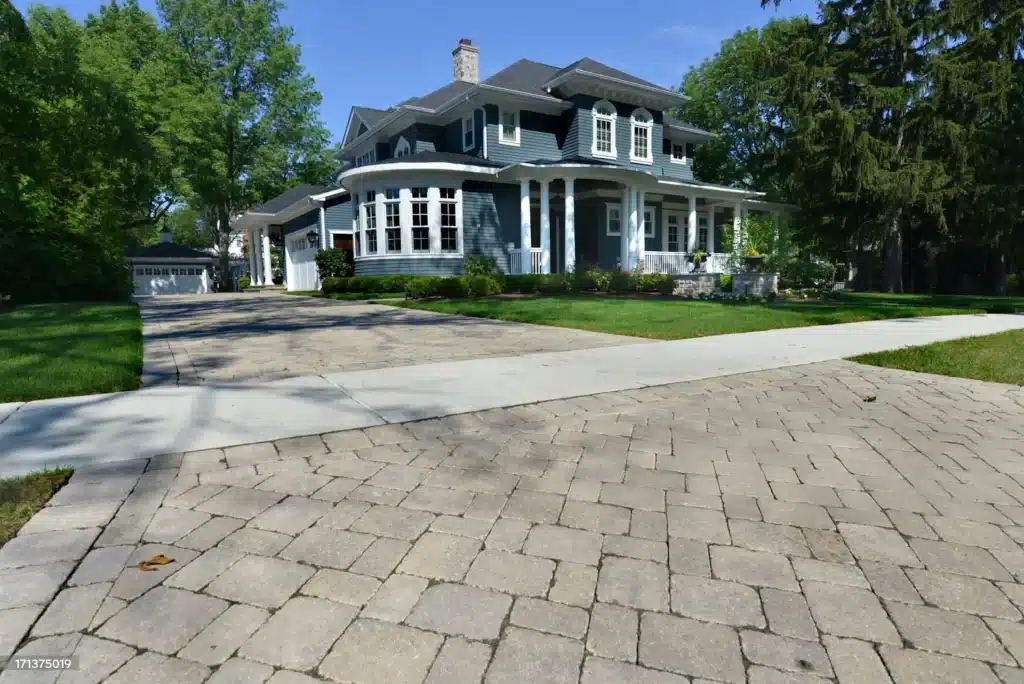
Residential driveway paving is a significant investment that enhances both functionality and curb appeal. However, common mistakes like poor planning, inadequate drainage, or subpar materials can lead to costly repairs and premature wear. Understanding these pitfalls – such as hiring inexperienced workers or neglecting maintenance – can help homeowners make informed decisions and ensure a durable, attractive driveway that stands the test of time.
Table of Contents
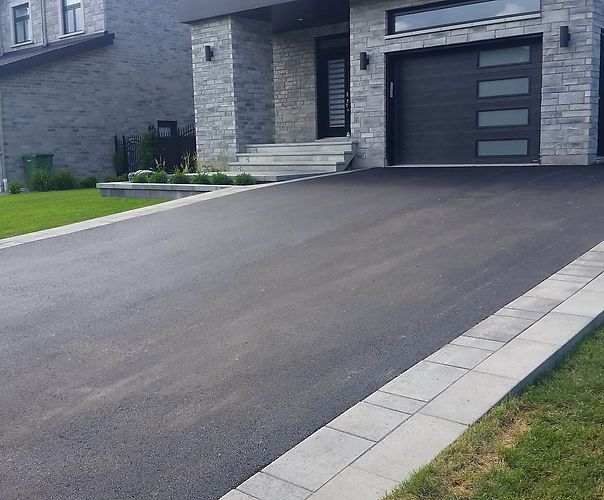
- Mistake #1: Neglecting Proper Planning and Design
- Mistake #2: Choosing the Wrong Materials
- Mistake #3: Overlooking Drainage Considerations
- Mistake #4: Hiring Unqualified Asphalt Contractors
- Mistake #5: Skipping Necessary Base Preparation
- Mistake #6: Ignoring Climate and Weather Conditions
- Mistake #7: Failing to Maintain the Driveway Post-Installation
Imagine arriving home to a smooth, well-paved driveway that complements your property’s aesthetic while providing years of reliable use. Now, picture the opposite: cracks, uneven surfaces, and water pooling after every rainstorm. Unfortunately, many homeowners experience the latter due to avoidable errors during the paving process. A driveway isn’t just a functional space – it’s an extension of your home’s character and value. That’s why it’s essential to work with trusted professionals who understand the intricacies of quality paving.
Whether you’re installing a new driveway or upgrading an existing one, partnering with skilled asphalt contractors ensures the job is done right from the start. In this article, we’ll explore the seven most common mistakes in residential driveway paving and how to avoid them, empowering you to create a driveway that’s both beautiful and built to last.
Mistake #1: Neglecting Proper Planning and Design


A driveway might seem like a straightforward project, but skipping the planning phase can lead to costly headaches down the road. Without careful consideration of factors like space utilization, traffic flow, and aesthetic appeal, even the best materials and workmanship can fall short.
Understanding Load Capacity
One of the most overlooked aspects of driveway planning is accounting for the weight it will need to support. For instance, if you frequently park heavy vehicles like trucks or RVs, the driveway must be designed with reinforced layers to prevent sinking or cracking. Failing to plan for load capacity often results in premature damage, requiring expensive repairs within just a few years.
Importance of Aesthetic Design
While functionality is key, aesthetics shouldn’t be ignored. A well-designed driveway complements your home’s architecture and landscaping, enhancing curb appeal. Consider elements like colour variations (e.g., exposed aggregate finishes) or patterns that align with your property’s style. However, avoid overly complex designs if they don’t suit your neighbourhood or lifestyle – simplicity often stands the test of time.
Mistake #2: Choosing the Wrong Materials

Selecting the right materials is one of the most critical decisions in driveway paving. The wrong choice can lead to premature wear, poor aesthetics, or even structural failure. With so many options available, it’s easy to feel overwhelmed, but understanding the strengths and weaknesses of each material can help you make an informed decision.
Asphalt vs. Concrete vs. Gravel
Each material has its unique benefits and drawbacks, depending on your needs and environment. Asphalt is cost-effective, durable, and provides a smooth finish, making it ideal for regions with moderate weather fluctuations. Concrete, on the other hand, offers a longer lifespan and greater design flexibility but comes at a higher upfront cost. Gravel is budget-friendly and low-maintenance but lacks the polished look of paved surfaces and can shift over time, requiring regular re-leveling.
The Role of Quality Aggregates
Beyond the surface material, the quality of aggregates used in the base layer plays a crucial role in driveway durability. Aggregates are the crushed stones or gravel that form the foundation beneath the asphalt or concrete. Using substandard aggregates can compromise the structural integrity of the driveway, leading to sinking, cracking, or uneven surfaces over time. Always ensure that high-quality, compacted aggregates are used to create a stable base before laying the final surface material.
Mistake #3: Overlooking Drainage Considerations
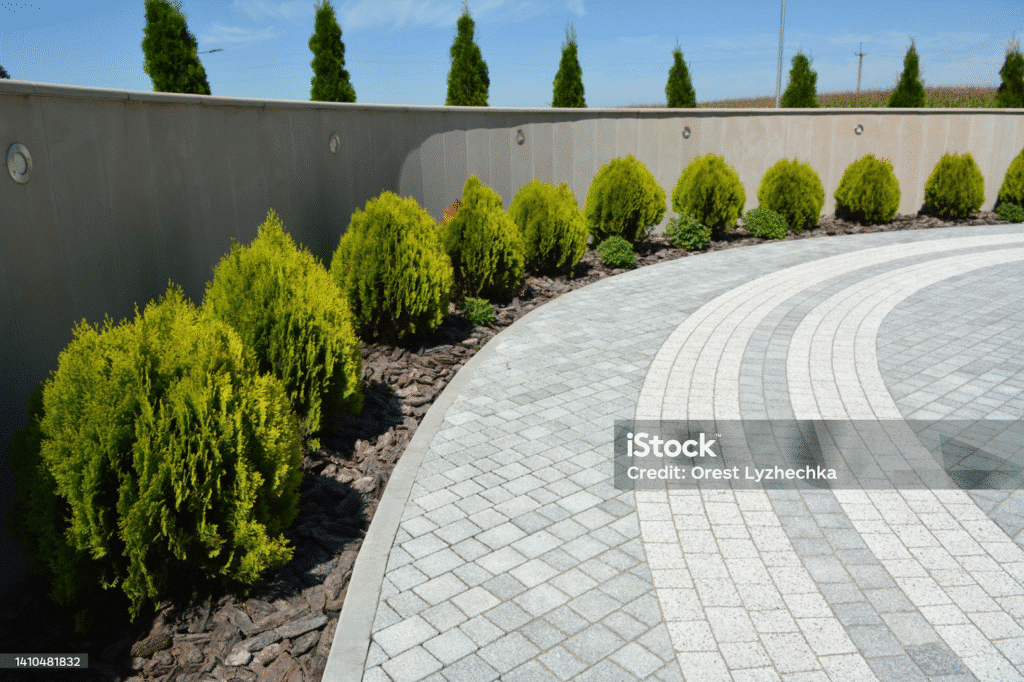
One of the most underestimated aspects of driveway paving is proper drainage. Without it, water can pool on the surface, seep into cracks, or erode the base layer, leading to costly damage over time. Poor drainage not only compromises the structural integrity of your driveway but also creates unsafe conditions, such as icy patches in colder climates.
How Water Affects Pavement
Water is one of the biggest enemies of any paved surface. When rainwater or snowmelt isn’t directed away from the driveway, it can penetrate small cracks and expand during freeze-thaw cycles, causing further cracking or potholes. Over time, this weakens the foundation and leads to uneven settling. Even in warmer climates, standing water can wear down the surface material, reducing its lifespan. To avoid these issues, it’s crucial to incorporate proper drainage solutions from the start.
Solutions for Effective Drainage
There are several ways to ensure your driveway has adequate drainage. First, the driveway should have a slight slope – typically 1% to 2% – to allow water to flow away from the surface. This prevents pooling and reduces the risk of water infiltration. For driveways located in low-lying areas or regions with heavy rainfall, installing additional drainage systems like French drains or catch basins can be beneficial. These systems redirect water away from the driveway and into appropriate outlets, such as storm drains or natural runoff areas.
Mistake #4: Hiring Unqualified Asphalt Contractors

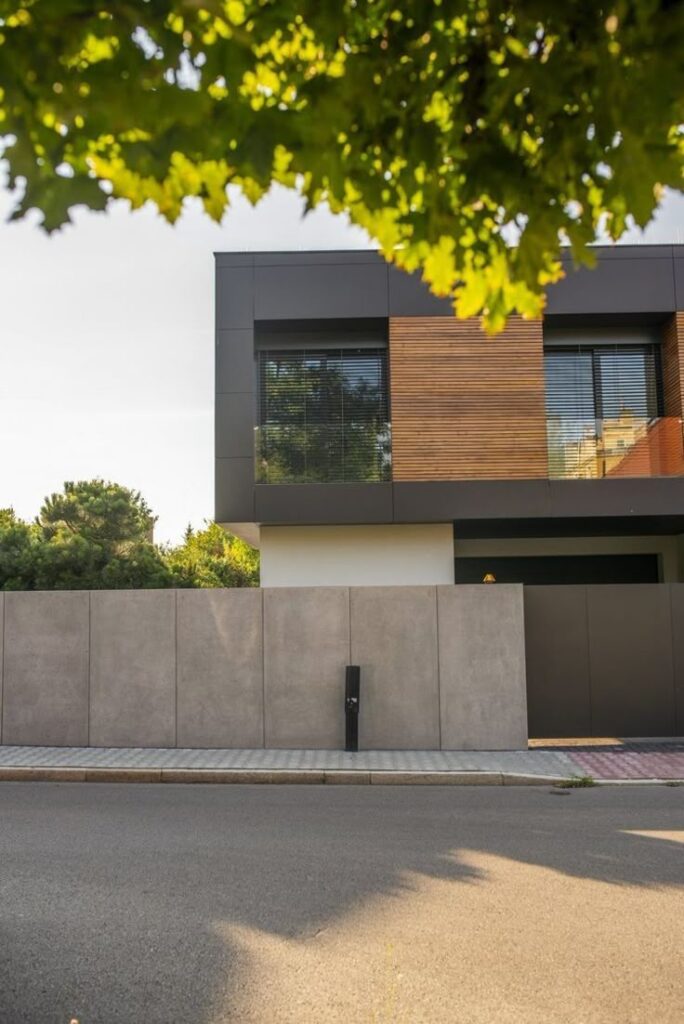
Choosing the right contractor is one of the most critical decisions in driveway paving. Unfortunately, many homeowners make the mistake of hiring unqualified or inexperienced contractors, which can lead to subpar workmanship, poor materials, and long-term issues.
Red Flags to Watch For
Not all contractors are created equal, and it’s important to vet them carefully before signing a contract. Some common red flags include:
- Lack of proper licensing, bonding, or insurance. This not only puts you at risk legally but also financially if something goes wrong during the project.
- Vague or overly low estimates. While affordability is important, unusually low bids often indicate cutting corners, such as using inferior materials or skipping essential steps like proper base preparation.
- Absence of references or past work examples. Reputable contractors will have a portfolio of completed projects and happy clients willing to vouch for their work.
- Pressure to sign quickly or pay large upfront deposits. Trustworthy professionals provide transparent timelines and fair payment terms.
Mistake #5: Skipping Necessary Base Preparation

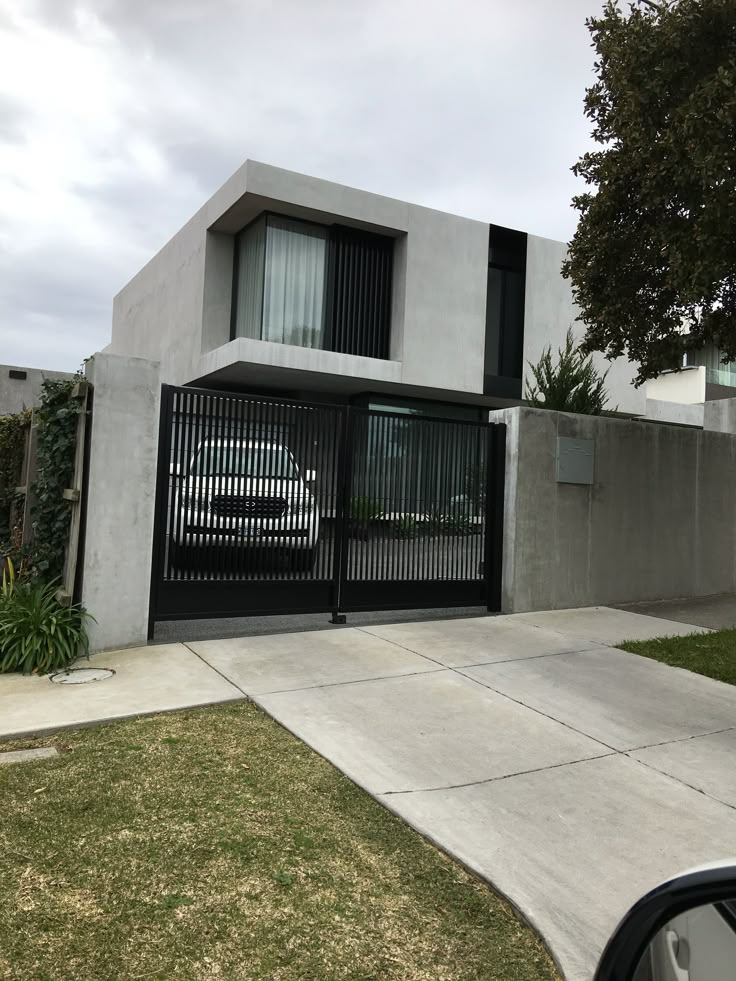
A strong foundation is the backbone of any durable driveway. Yet, many homeowners and even some contractors overlook the importance of proper base preparation, leading to structural failures like cracking, sinking, or uneven surfaces. Without a solid base, even the highest-quality surface materials won’t hold up over time.
What Is Base Preparation?
Base preparation involves creating a stable, compacted layer beneath the driveway’s surface. This typically includes removing topsoil, grading the area, and laying down layers of crushed stone or gravel. The base layer must be thick enough to support the weight of vehicles and withstand environmental factors like freeze-thaw cycles. A poorly prepared base can shift or erode, causing the driveway to crack or sink prematurely.
Mistake #6: Ignoring Climate and Weather Conditions

Climate plays a pivotal role in the longevity and performance of your driveway. Ignoring local weather patterns when planning and installing your driveway can lead to accelerated wear and tear, making it essential to tailor your paving approach to your region’s unique conditions.
Cold Climates and Freeze-Thaw Cycles
In colder regions, freeze-thaw cycles are a major concern. Water seeps into small cracks in the pavement, freezes, expands, and causes further cracking or potholes. To combat this, it’s crucial to use flexible materials like asphalt, which can better withstand these stresses compared to rigid concrete. Additionally, proper sealing and regular maintenance help prevent water infiltration, reducing the risk of damage during harsh winters.
Hot Climates and UV Damage
On the flip side, hot climates pose their own challenges. Prolonged exposure to intense sunlight and high temperatures can soften asphalt, leading to rutting or surface deformities. To mitigate this, contractors often use polymer-modified asphalt, which is more resistant to heat. Regular sealcoating also acts as a protective barrier against UV rays, extending the life of the driveway.
Mistake #7: Failing to Maintain the Driveway Post-Installation
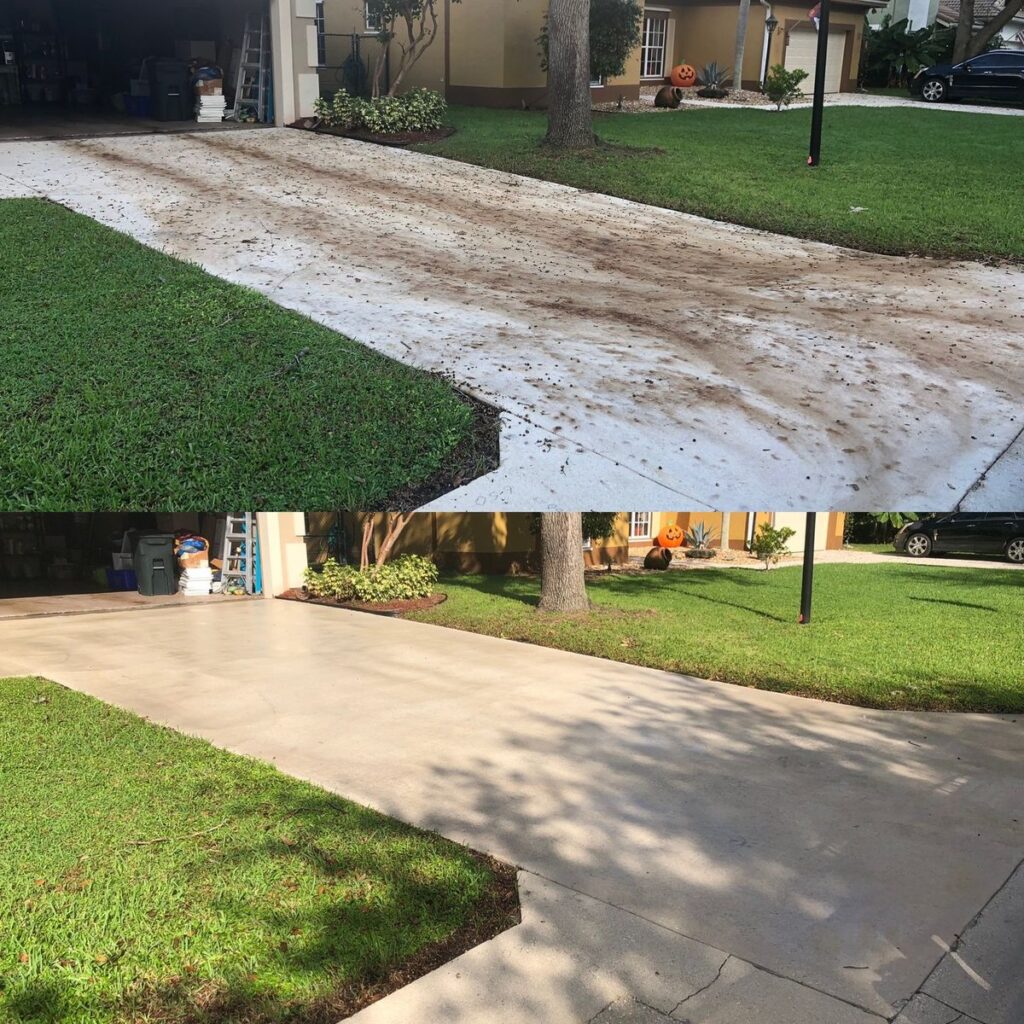
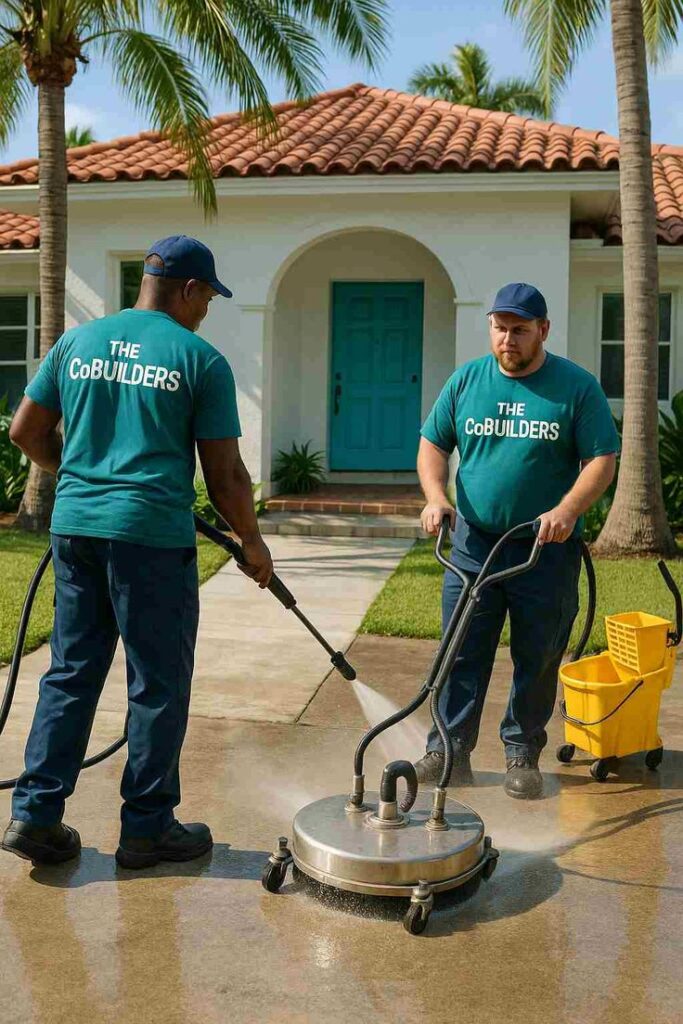
Installing a new driveway is just the beginning. Without proper maintenance, even the best-paved surfaces can deteriorate quickly. Neglecting upkeep not only shortens the lifespan of your driveway but also diminishes its appearance and functionality over time.
Routine Cleaning and Sealing
It is necessary to clean your driveway on a regular basis to make sure that no dirt, oil stains or even debris are left on its surface. Periodically, clean the surface, preferably using a pressure washer or mild solution of detergent, particularly after a severe spell of weather. And, by applying a 2-3 yearly sealcoat (more frequently depending on the use and climate) creates a barrier to water penetration, UV exposure and general wear. In addition to lengthening the lifetime of your driveway, sealcoating also reconditions the driveway to have a rich, dark colour to rehabilitate the curb appeal.
Conclusion: Building a Durable and Beautiful Driveway
A developed driveway is not only a functional area, but it is also a money-making investment in your home’s value, safety, and beauty. Through the seven common errors mentioned in this article, you can enjoy your driveway lasting many years to come as you increase the curb appeal of your home. One of the pivotal aspects of a paving project is proper planning, selection of the material to be used, drainage systems, and the expertise of the professionals.
- 0shares
- Facebook0
- Pinterest0
- Twitter0



